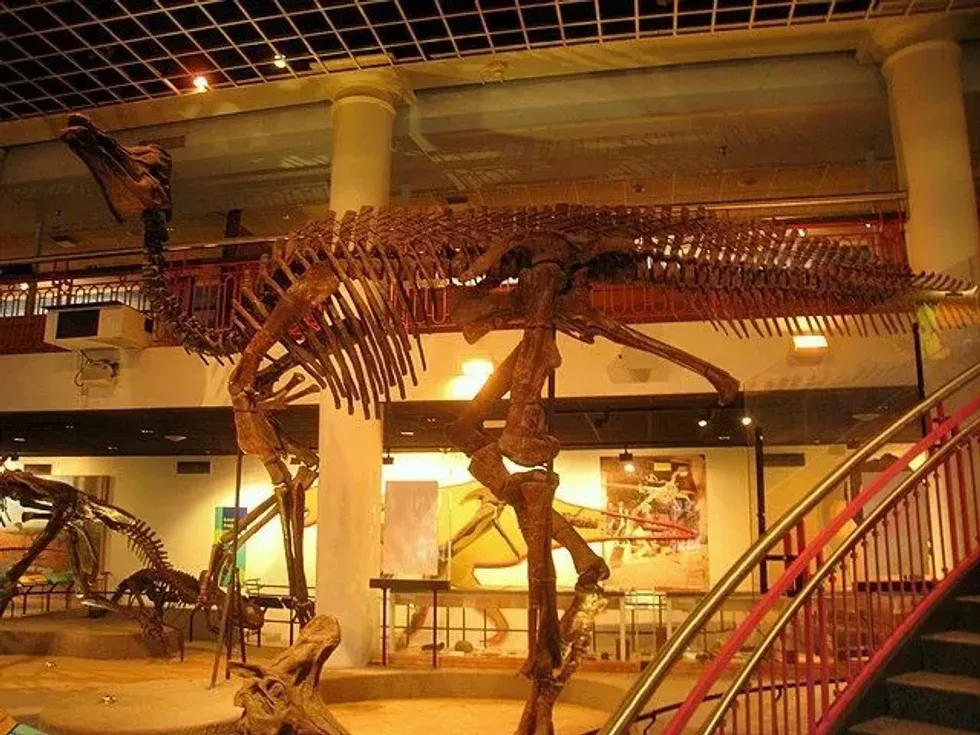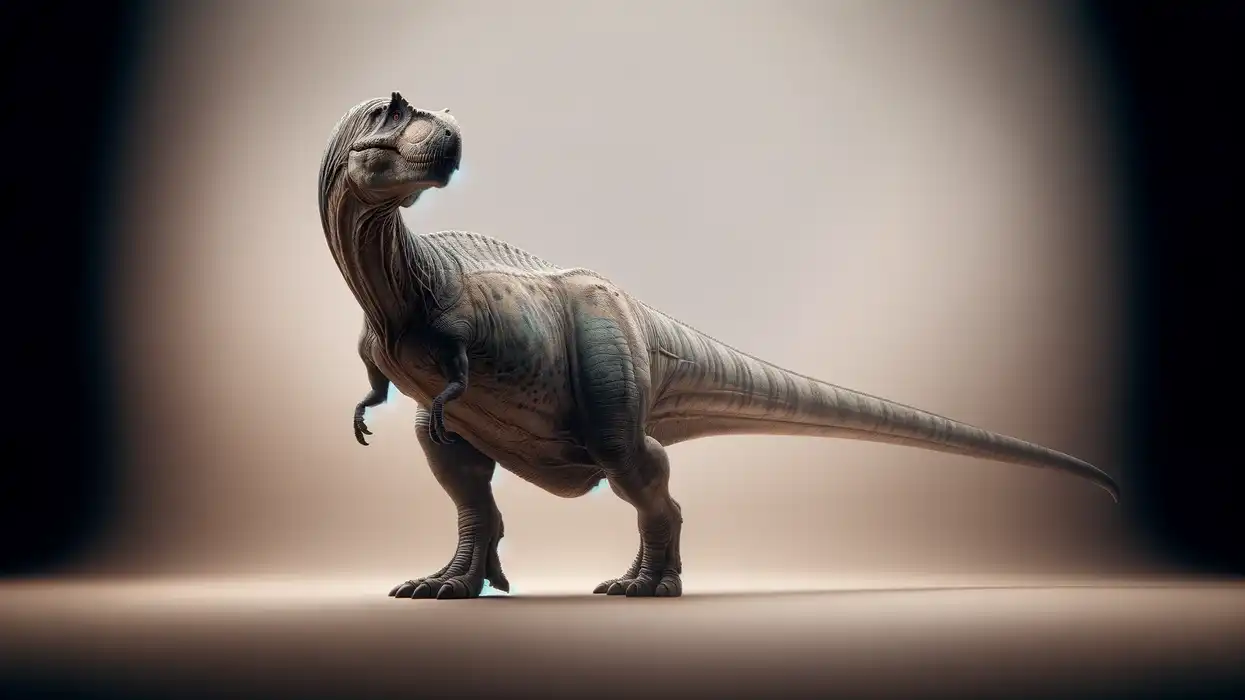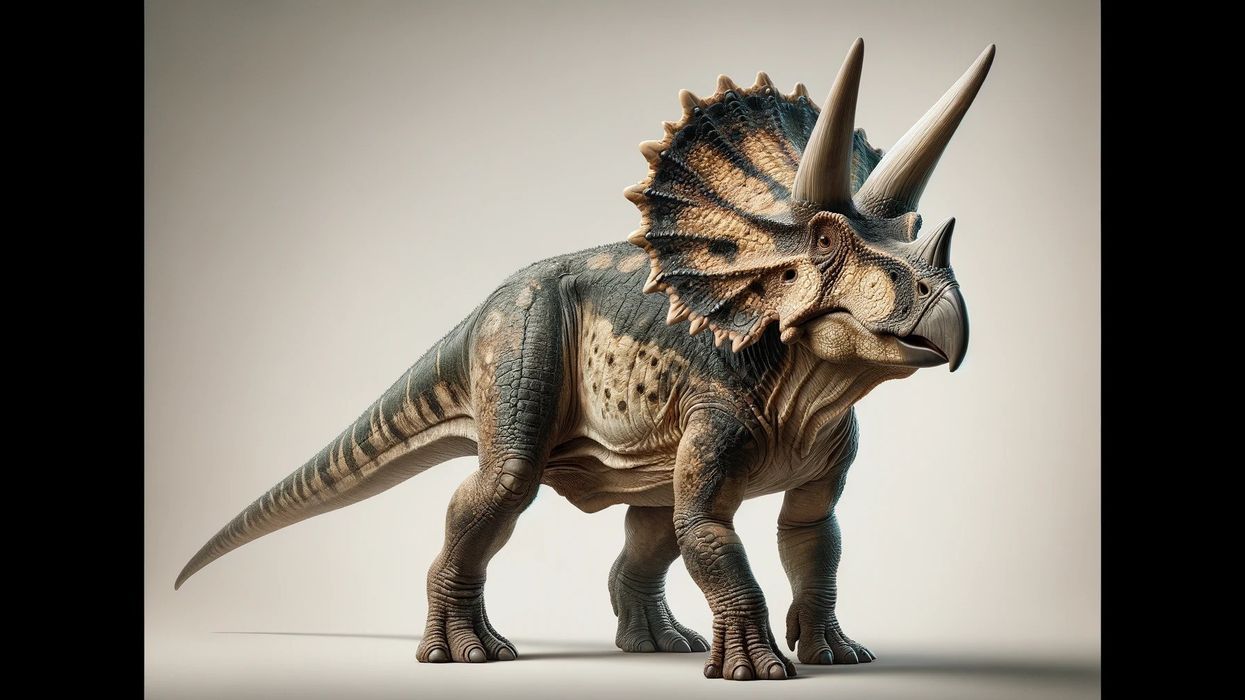Corythosaurus casuarius is an ornithopod hadrosaurid, whose fossil remains were discovered from Alberta, in present-day North America. The most special characteristic feature that was found and named by Barnum Brown was the crest that could be seen on the top of the fossilized skull.
The function of this crest is still under speculation, however, it is estimated that it had nasal passages that could be used for the production of calls and communicative sounds as well.
In addition to this, interestingly, even the skin impressions of these animals have been recovered from the surface of the earth - which is fairly rare in the field of paleontology!
For more related content, check out Jinzhousaurus and Maiasaura.
Corythosaurus Interesting Facts
How do you pronounce 'Corythosaurus'?
The name of this animal would be pronounced as 'cory-thaw-sore-us'.
What type of dinosaur was a Corythosaurus?
The Corythosaurus was a duck-billed dinosaur of the family Hadrosauridae. This ornithopod dinosaur genus had all the characteristics that are well known to have defined the class, such as a herbivorous diet.
In which geological period did the Corythosaurus roam the earth?
The geological period during which the Corythosaurus is estimated to have lived on earth is the Late Cretaceous period. If you happen to be wondering how long ago that was, the Late Cretaceous was no less than around 100 million years ago!
These dinosaurs, however, are estimated to have thrived around 75.7 million years ago - as is evident to the paleontologists through the preserved fossils.
When did the Corythosaurus become extinct?
The exact timeline as to when the Corythosaurus may have become extinct is not known, however, we do know that these dinosaurs lived during the late cretaceous period. The Cretaceous period is estimated to have ended around 66 million years ago, with a meteor collision.
This gives us a fair idea of when these hadrosaurid dinosaurs may have become extinct if they did happen to survive until the end of the age.
Where did a Corythosaurus live?
Since the fossils of Corythosaurus, or the 'helmet lizard', have been discovered in present-day North America, it is estimated that these dinosaurs were endemic to the land. The specific place where many fossils of the Corythosaurus dinosaur was Alberta.
What was a Corythosaurus' habitat?
The habitat of these dinosaurs is said to have consisted of limited fauna - as is gathered from the preserved fossils of the period and area. Being herbivorous in nature, it is natural that these animals preferred to live in woodlands and forests, where there would be ample plant material to feed on.
Who did a Corythosaurus live with?
Being a herbivorous species, it is almost a given that the Corythosaurus dinosaur genus would have preferred to live in small or large packs. While it is unclear if they would also nest in close proximity with the same or related genera, we do know that hadrosaurids generally prefer to live in groups to avoid being preyed on.
This tactic followed by herbivores of ancient times is applicable to the day and can be seen in many animal species that now inhabit the earth.
How long did a Corythosaurus live?
The average lifespan of the animal can hardly be estimated from the Corythosaurus fossil. Additionally, paleontologists are also yet to come to a conclusion as to how long these dinosaurs may have been a part of the diverse range of inhabitants that once occupied the earth.
How did they reproduce?
Dinosaurs from North America, as well as all other parts of the world, are known to have been oviparous. This means that these animals reproduced by laying eggs. That is to say that the Corythosaurus, too, reproduced by laying eggs. It is however not known whether or not these dinosaurs nested in colonies, or had any courting rituals.
Corythosaurus Fun Facts
What did a Corythosaurus look like?

The most significant characteristic feature of this dinosaur genus is the crest that could be found at the top of its head. These crests are estimated to have had nasal passages and were capable of producing sounds.
The fossil remains of these animals also show skin impressions that were preserved completely and show that the hollow crest on the head, as well as the feet, tail, and other parts of the body was covered in thick, wrinkly skin.
How many bones did a Corythosaurus have?
While fossils of this dinosaur species do reveal interesting features such as the bony crest on the top of the skull, we hardly know how many bones the helmet lizard had in total. Such an estimate is hard to make mainly because the Corythosaurus skeleton had hardly ever been recovered in a completely preserved state.
When bones are crushed and most likely rearranged through years of decay, it is difficult to make an estimate of the total number of bones that these plant-eating dinosaurs may have had.
How did they communicate?
The bony crest at the top of the Corythosaurus skull wasn't just something that was used for head-butting. This crest is also estimated to have had the capacity to produce sounds.
In addition to the sounds that are likely to have been let out from the crest, scientists also suggest that these animals would have had a loud and harsh call - much like the sounds through which other dinosaurs are estimated to have communicated.
How big was a Corythosaurus?
The average length, from the hollow crest to tail, of these plant-eating dinosaurs, is estimated to be in the range of 27-31 ft (8.1-9.4 m). It is yet to be found out by scientists as to how tall they could grow to be.
How fast could a Corythosaurus move?
There is no substantial research that could tell us the speed at which the average Corythosaurus could move, however, it may be assumed through the ginormous size and weight of this animal that it may not have been the fastest.
How much did a Corythosaurus weigh?
The weight of an average Corythosaurus dinosaur is estimated to be around 3.3-4.4 short tons (3-4 tonnes).
What were the male and female names of the species?
There are no distinct names for the two sexes of Corythosaurus.
What would you call a baby Corythosaurus?
The baby Corythosaurus will be called a hatchling simply because oviparous reproduction is one of the most common characteristics in dinosaurs.
What did they eat?
This duck-billed dinosaur genus is known to have been herbivorous. This means that the Corythosaurus would feed on plants. These animals would usually tread on their feet as they grazed for plants and other soft foliage to feed on. The teeth of these animals suggest that they might have only liked to be feeding on soft plant materials.
How aggressive were they?
Aggression is not one of the characteristics associated with herbivorous animals, like Corythosaurus. Although they might present a dangerous look with the crest on top of the skull, these crests were mainly hollow and not meant for any dangerous activities.
Did you know...
Corythosaurus was discovered and named by Barnum Brown in 1911. The name, in Greek, translates to 'Corinthian helmeted lizard'.
The teeth of these animals were arranged in clusters at the back of the head.
The size of Corythosaurus suggests that these animals may not have been the fastest.
These dinosaurs used their crests to create sounds that would help in communication.
Differences in the shape of the crest may have been related to the size of these animals, however, scientists are still trying to prove this.
The skin impressions of these hadrosaurids have been preserved in fossil remains. This shows that Corythosaurus skins were wrinkly and thick.
These animals had four feet and used them to tread around in search of food.
What does 'Corythosaurus' mean?
The name Corythosaurus literally translates from Greek to 'Corinthian helmet lizard'.
What did the Corythosaurus sound like?
It is likely that the Corythosaurus sounded somewhat loud and husky since the crest and the nasal passages therein were used in creating the call.
Here at Kidadl, we have carefully created lots of interesting family-friendly dinosaur facts for everyone to discover! For more relatable content, check out these Cedarpelta facts and Veterupristisaurus facts for kids.
You can even occupy yourself at home by coloring in one of our free printable Corythosaurus coloring pages.









